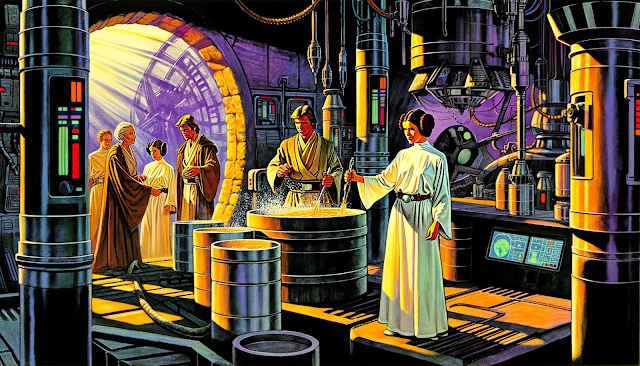The Mystery of a Non-Bubbling Airlock
Leaks: The Primary Suspect
One of the most common reasons for a lack of bubbles in the airlock is a simple leak in the brewing equipment. If there's a gap or an imperfect seal in the fermenter, CO2 may escape through these alternative routes instead of passing through the airlock. To troubleshoot this, inspect the fermenter's lid, tap, and any other connections to ensure they are tightly sealed.
Temperature's Deceptive Role
Temperature plays a crucial role in the fermentation process. Lower temperatures can slow down the yeast's activity, delaying the appearance of bubbles in the airlock. If your fermenter is stored in a cool location, consider moving it to a warmer spot. Wrapping your fermenter in insulating material like blankets can also help maintain a consistent brewing temperature, particularly during colder months.
Patience is Key
Fermentation can take varying amounts of time, influenced by factors like yeast strain, wort composition, and ambient temperature. It's not uncommon for fermentation to take up to 48 hours to begin. Before worrying, give your brew sufficient time.
Other signs of fermentation include the presence of krausen (a frothy scum) around the water level or a foamy layer at the top of the fermenter.
Investigating Further: Potential Issues
Yeast Viability
The health of your yeast is vital for successful fermentation. If the yeast is pitched into wort that is too hot, it can be destroyed. Similarly, using old or improperly stored yeast can result in weak or inactive fermentation. In such cases, repitching with a fresh batch of yeast is advisable.
Sanitization Factors
While maintaining a clean brewing environment is essential, some cleaning agents can inadvertently inhibit yeast activity. Residues from cleaning agents like bleach can be harmful to yeast. Proper rinsing after sanitization is crucial to prevent such issues.
Airlock Maintenance
Ensure your airlock is correctly filled, typically with water. Some brewers opt for vodka, as it can prevent bacterial contamination while allowing CO2 to escape.
 |
| Look forward to Shark Week this year? |
Airlocks: A Necessity or Not?
Historically, beer was brewed without the modern airlocks we use today. The primary function of an airlock is to release CO2 while keeping contaminants out. In the absence of an airlock, alternative methods like covering the fermenter with a sterile cloth can be used, though this increases the risk of contamination.
Final Thoughts
The absence of bubbles in the airlock should not be immediately considered a sign of failure in your brewing process. Brewing is a blend of art and science, and part of the journey involves understanding and adapting to the various nuances of the process. By paying attention to these details and troubleshooting where necessary, you can guide your brew towards success, with or without the reassuring presence of bubbles in the airlock. Cheers to your brewing adventures!


